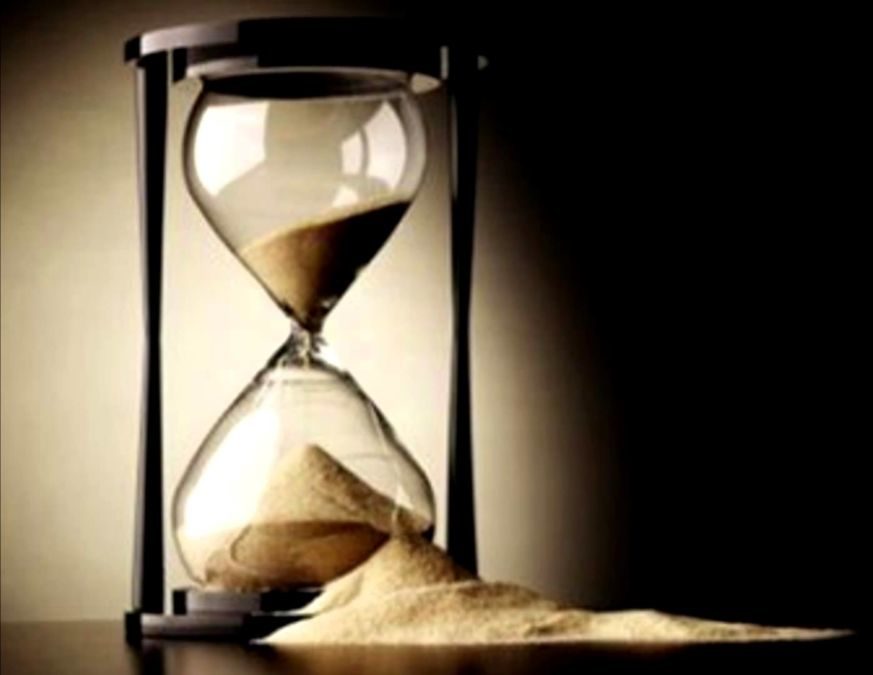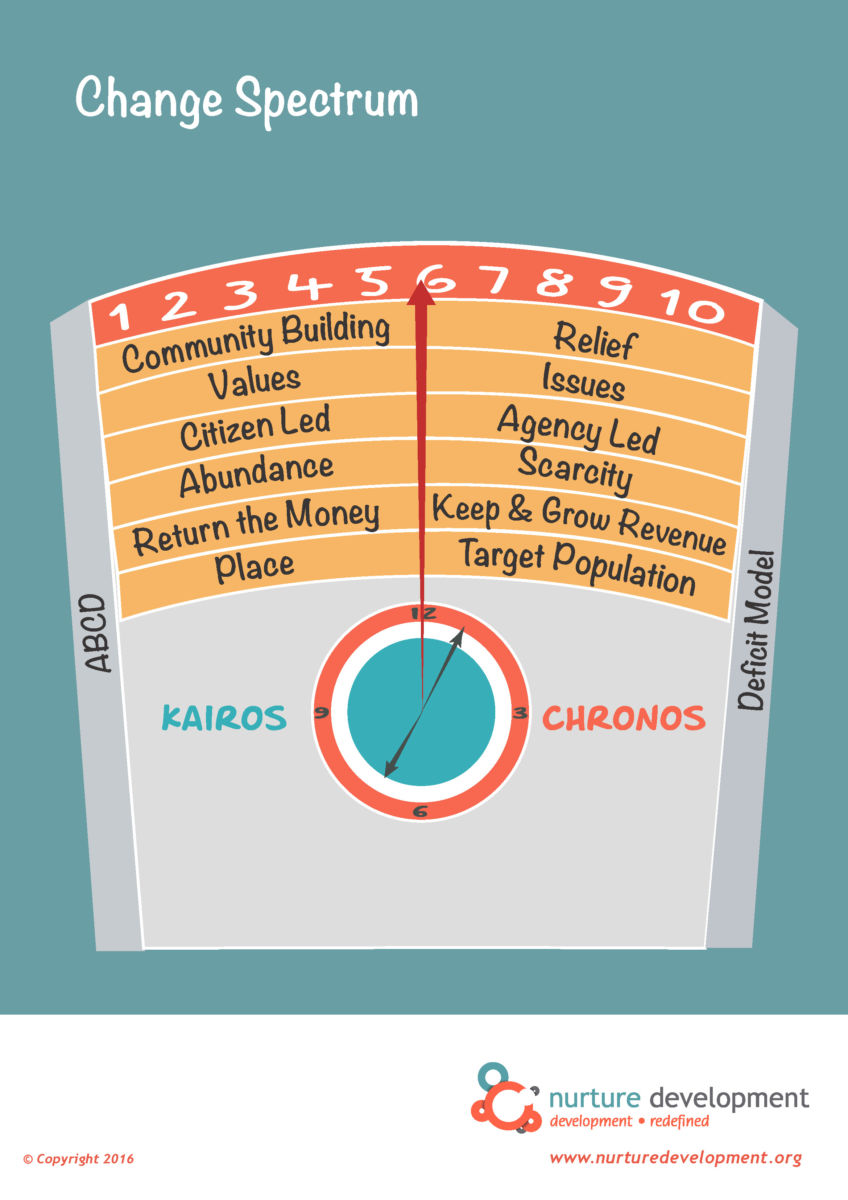
The Change Spectrum
I’ve had the privilege of seeing a lot of professional practitioners wrestle with the dilemmas that Asset-Based Community Development presents; serving while walking backwards being chief among them.
Below is a simple spectrum of the change that I’ve seen. I’ve rarely if ever seen all of these things happen in one place, but I remain open to that possibility.
When I present the spectrum in a workshop, I typically invite people to say where they feel they currently are and where they’d like to be. Hot on the heels of that invitation come the very understandable questions of should they answer for themselves or as a part of the agency they work with. Why not try both, I say.
There is no particular hierarchy in the way I designed this, but in order of how they appear, let me explain each of the suggested shifts from right to left:
- Relief can be defined as financial or practical assistance given to those in special need or difficulty. It’s the outside in kind of stuff, where things are ‘done to’ or ‘for people’. Community Building in contrast enables people to do things in association with each other. It is done ‘by the people’ themselves.
- The way we frame issues like homelessness, can set us down a road of direct service provision before we’ve fully understood what it is the people we are serving really want. What if, for example, people value autonomy more than shelter? Fixating on issues instead of respecting the values of those we serve and getting clear about our own practice values has been the birthplace of many a ‘white elephant’.
- This shift simply asks who’s in the driving seat of social change. The answer far too often is that the institutions are. How can we relocate that authority, so that communities and citizens are the primary architects of an alternative future (where they are the golfers and paid practitioners are the caddies)?
- The scarcity mindset starts with an exclusive focus on what’s missing or broken and having identified that, we quickly move into fixing mode at the lowest cost possible. It further drives us into a wholesale as opposed to a retail model of human services, where we aggregate people with the same conditions together, for efficiency, instead of working with people in their local context. The scarcity mindset also leads to top down, silo-based approaches. Whereas abundance thinking starts with a recognition that people come to know what resources they need from outside by discovering, connecting and mobilising the abundance they have within and around them.
- I often ask human service practitioners to honestly assess, ‘if the people they serve had the same level of income as the practitioners have, would they use that income to purchase the services currently being offered to them?’ To date, not one person I’ve asked has said yes. How can we ensure people have choice and control in shaping their own lives? A significant part of the answer is ensuring we do not disable choice and control, by hoarding resources to do what we believe to be right, but instead restoring the power and resources to their rightful place, the people who themselves have to live with and through those choices.
- It is typical of most public sector and third sector organisations to work out of silos. We have the youth sector, the eldercare agencies, those that work in the field of disabilities etc. But this approach can lead to ghettoisation and inadvertently lead to the further erosion of communities of place. Thinking about the village/place bounded communities as the primary unit of change provides a much needed antidote to the dominant target population model as it enables connections to be made across population groupings, their economy and ecology. However, it also enables various services to step beyond their administrative boundaries on the common ground of the neighbourhood, where they can form genuine humble relationships with local residents.
The Greek words at the bottom of the spectrum: Chronos and Kairos, were inspired by my friend and ABCD Faculty member Al Etmanski http://aletmanski.com/impact/slow-change/
In his blog he reminds us:
Despite the urgency, lasting change takes much longer than we appreciate.
Darn.
One way to counteract our impatience is to shift from ‘chronos’ to ‘kairos’ time. Chronos time is sequential time, measured by the clock and which seems to be speeding up. Kairos time bends and stretches, sometimes it even seems to stand still. Chronos is measured by the clock which many of us try to beat. Kairos unfolds like the seasons, following a natural rhythm and waiting for the right moment.
Most of our change making efforts are afforded a gestation period of three to five years (the average funding or election cycle), and they are expected to be hatched as fully mature and ready to change the world. If we’re truly honest with ourselves we know that social and political change does not unfold in linear chronological way, it is emergent, messy and goes as fast as the speed of trust.
Cormac Russell

